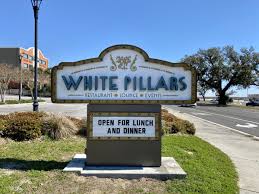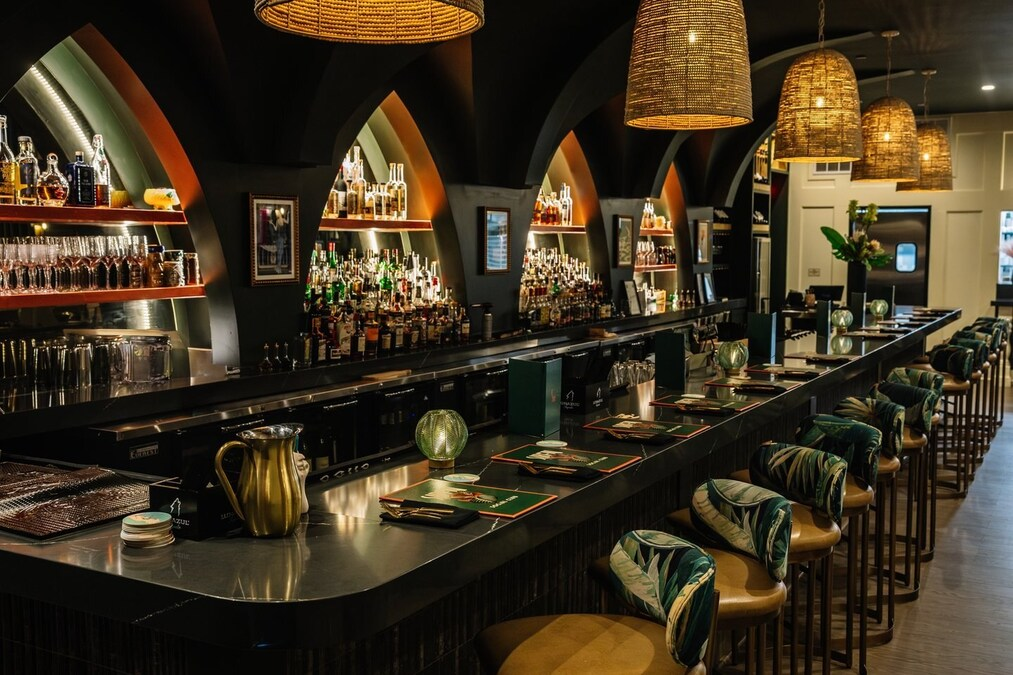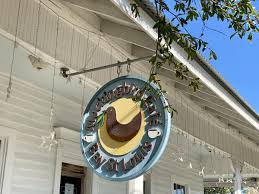The Gulf Coast has always been more than sun, sand, and waves. It is a region where food tells a story every dish infused with history, culture, and love. From New Orleans’ vibrant streets to Tampa’s laid-back waterfronts, Gulf Coast restaurants have never been just places to eat. They were destinations, experiences, and, most importantly, memories. Today, we take a nostalgic journey to remember the Gulf Coast restaurants we still miss, the flavors that linger in our minds, and the spaces that shaped countless family meals, celebrations, and late-night cravings.
The Charm of Old Gulf Coast Dining
Walking into a Gulf Coast restaurant in the past wasn’t merely about satisfying hunger. It was an encounter with authenticity. Wooden tables worn smooth by years of laughter, menus that didn’t just list items but promised stories, and the smell of fresh seafood mingling with spices it was an experience that went beyond taste.
Places like The Olde Oyster House in Biloxi or Galatoire’s in New Orleans created spaces that celebrated their communities. There was a rhythm to these restaurants: servers who remembered your favorite dish, chefs who greeted regulars with a smile, and patrons who felt like part of one big family. Dining here wasn’t transactional; it was relational. The warmth of the staff and the familiar clatter of plates made you feel at home immediately.
Seafood Havens We Long For
No conversation about Gulf Coast cuisine is complete without seafood. Restaurants along the coast became legendary for serving the freshest shrimp, crab, and oysters caught just hours before they hit the kitchen. Places like Acme Oyster House in New Orleans and Shaggy’s in Gulf Shores were more than eateries they were institutions.
Imagine steaming bowls of gumbo or platters of blackened fish, seasoned to perfection, served with hushpuppies still warm from the fryer. Even years later, the memory of that first bite—crispy on the outside, tender on the inside lingers in the senses. Shrimp po’boys, soft French bread cradling perfectly fried shrimp with lettuce, tomato, and a zesty remoulade, remain icons of Gulf Coast flavor.
Many of these restaurants also featured oyster bars where locals could slurp freshly shucked oysters while sharing laughs and stories with strangers who soon became friends. The absence of these seafood havens is not just a culinary loss; it’s a loss of communal experience, a reminder that some meals were about connection as much as flavor.

Sweet Treats That Tasted Like Home
Desserts in Gulf Coast restaurants were nothing short of magical. Pecan pies, bread puddings, beignets, and key lime pies made afternoons sweeter and celebrations unforgettable. Café du Monde, for instance, was a place where powdered sugar became a badge of honor on anyone brave enough to try multiple beignets in one sitting.
The sweet shops and cafés along the coast offered treats that were comforting and timeless. Pecan pies with just the right balance of caramelized sweetness and nutty crunch became a regional trademark, while key lime pies captured the perfect harmony of tartness and creaminess. These desserts were not merely food they were experiences, evoking a sense of nostalgia for those who grew up savoring them after a long day at the beach or a family dinner.
Hidden Gems That Disappeared Too Soon
Some of the Gulf Coast’s most beloved spots weren’t widely known outside their towns. Small, family-run establishments tucked away in quiet streets offered flavors and experiences that chain restaurants could never replicate. Old Florida Fish House in Destin or The Blue Crab Restaurant in Orange Beach were examples of places where every dish told a story and every patron felt like part of the family.
Visiting these hidden gems felt personal, like being let in on a secret that only locals could fully appreciate. Each restaurant had its quirks: an old jukebox in the corner, handwritten menus, or a chef who prepared your dish just the way you liked it. Losing these spots meant losing a piece of the Gulf Coast’s soul, a reminder that culinary treasures often live in the most unassuming places.
Iconic Interiors and Warm Hospitality
Dining isn’t just about food it’s about atmosphere. Many Gulf Coast restaurants had interiors reflecting the region’s character: vibrant murals, nautical décor, cozy booths, and open kitchens where diners could watch meals being prepared. These spaces were alive with energy.
Restaurants like Commander’s Palace in New Orleans combined elegance with Southern hospitality. Patrons were greeted with a sense of ceremony, where even the simplest dishes were served with flair. But beyond décor and presentation, it was the people who left the most lasting impressions. Owners who remembered your favorite dish, servers who shared stories of the town, and chefs who treated every plate as a masterpiece that human touch is irreplaceable.
Festivals and Special Events
Many restaurants became legendary because they weren’t just places to eat—they were community hubs. Mardi Gras-themed dinners, live jazz nights, or seafood festivals transformed these spots into arenas of joy. Dining here wasn’t about eating alone; it was about sharing music, laughter, and life with others.
The Little Pearl in Biloxi and Tupps Brewery in Gulf Shores were known for hosting local events that turned meals into memories. Families came together, friends celebrated milestones, and strangers bonded over shared plates. These restaurants became a backdrop for personal stories, festivals, and traditions that are difficult to replicate today.

The Stories Behind the Dishes
Many Gulf Coast restaurants had signature dishes with fascinating histories. Perhaps a gumbo recipe passed down for generations, a secret spice blend perfected over decades, or a dessert inspired by a family member’s favorite treat these stories made every bite richer.
For example, the secret remoulade at Acme Oyster House or the stuffed crab at The Crab Shack in Destin weren’t just recipes they were legacies. Each dish carried the memory of its creator, a family story, and a cultural tradition. Eating these meals was a way of connecting with the past, a reminder that food is intertwined with identity and history.
A Taste of Tradition We Still Crave
Even as modern dining trends evolve, the classics never go out of style. Po’boys, crab cakes, fried green tomatoes, and shrimp étouffée remain dishes we yearn for because of the memories they evoke. Restaurants like Deanie’s Seafood in New Orleans or The Hangout in Gulf Shores shaped our expectations of comfort food.
The absence of these originals reminds us how deeply food and memory intertwine. Some meals are not just eaten they are felt. Every bite carries echoes of laughter, late-night drives, family conversations, and sunsets over the water.
The Influence on Modern Dining
Although many Gulf Coast restaurants have closed, their legacy lives on. New chefs draw inspiration from the flavors and techniques pioneered by these beloved spots. The bold use of spices, emphasis on fresh seafood, and fusion of Southern and Creole influences can be traced back to the culinary traditions these restaurants popularized.
Modern establishments may offer sleek décor and Instagram-worthy plating, but the soul of Gulf Coast cuisine the emphasis on warmth, authenticity, and community—remains deeply rooted in these lost classics. They laid the groundwork for what Gulf Coast dining has become today.
Why We Miss Them
Why do we miss these restaurants so much? It’s not only the food. It’s the way they made us feel valued, connected, and at home. They were more than dining spots; they were cultural landmarks. Losing them feels like losing a piece of personal history, a chapter of our lives intertwined with flavors, conversations, and laughter that can never be replicated exactly the same way.
Keeping Their Memory Alive
Even if we can’t visit these restaurants anymore, we can honor their memory. Sharing recipes, recreating favorite dishes at home, or supporting successors who carry on traditions helps preserve their legacy. Social media, blogs, and local food communities also document these experiences, ensuring future generations can appreciate the culinary treasures that once defined the Gulf Coast.
Nostalgia Served on a Plate
Ultimately, the Gulf Coast restaurants we still miss remind us of a universal truth: food is more than sustenance. It is memory, culture, and emotion all on a plate. The tastes we long for today are inseparable from the people, places, and experiences that surrounded them.
Walking along the Gulf Coast today, one might notice new restaurants, trendy cafés, and global cuisines, but the essence of what made these older establishments unforgettable remains irreplaceable. It is the laughter at crowded tables, the clinking of glasses in celebration, the aroma of spices mingling with sea breeze these are the details we continue to miss.
Conclusion: More Than Just Restaurants
Gulf Coast dining was about community, tradition, and connection. While many of our favorite spots have disappeared, the essence of what they offered warmth, authenticity, and unforgettable flavor remains timeless. Remembering these restaurants is an act of celebration, a tribute to the meals and memories that shaped who we are. They may be gone, but in the hearts of those who experienced them, they will always be unforgettable.
The Gulf Coast lives in its cuisine, and as long as we remember these restaurants, we continue to carry a piece of that vibrant, flavorful legacy with us. Every recreated dish, every story shared, and every taste enjoyed keeps the spirit of these beloved places alive, allowing us to relive a culinary past that is never truly gone.
Do follow Gulf Magazine on Instagram.
Also Read – Why Gulf Researchers Are Urging Global Meat Reduction for Health and Sustainability



